For over 90 years, Fendi has been an internationally celebrated furrier and luxury goods fashion house acclaimed for elegance, luxurious innovation and timeless quality. The family owned house is particularly famous for their contributions to Italian women’s fashion, specialising in luxurious leather bags and fur goods.
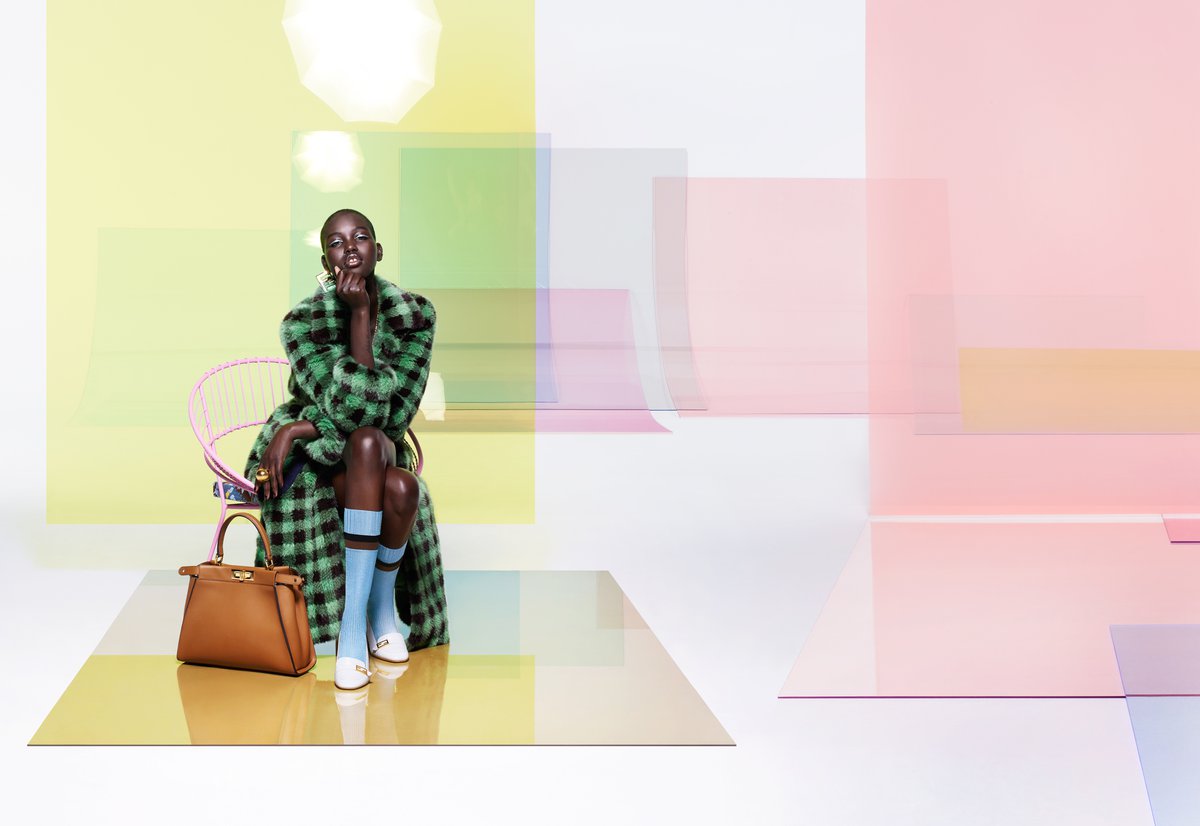
Adele Casagrande and her husband Edoardo Fendi founded their famous fashion house in 1925 as a leather goods label. Beginning as a small boutique in via del Plebiscito, Rome, the pair produced small and medium leather goods such as handbags. Their first major success was with their Selleria and handcrafted artisan bags in 1926. Soon production expanded to include a secret side hustle of fur goods. Known for superior craftmanship and quality product, the shop prospered through the following 2 decades, despite the potted fortunes of Italy’s economy through the 1930’s and WWII.
Edouardo Fendi died a year after the war ended. Feeling the winds of change and now established as a name of some repute in Rome, the family-owned enterprise began its dynastic model. In 1946 Fendi’s operations were passed on to the next generation, the famous five Fendi daughters Paola, Anna, Franca, Carla and Alda. Joining the company, each took on a 20% share and specialised in a particular sector: furs, leatherwear, public relations and sales. This enthusiastic next generation of Fendi ushered in a new era for the brand, building up the label their parents had begun into an international style powerhouse known for its timeless, high quality goods. The 40’s birthed an era for Fendi that was defined by a wonderfully feminine and elegant aesthetic.
The handover marked the first major leadership shift away from the house’s stalwart bags, fur coats and leather goods. By 1965 the sisters began incorporating strategic partnerships, most notably through fostering a young Karl Lagerfeld in what was to become a lifelong collaboration. The relationship between Lagerfeld and the Fendi family was the longest in fashion history, spanning over 55 years, with Lagerfeld working closely with Anna’s daughter and creative director Silvia Venturini Fendi till his death.
Fendi Fur
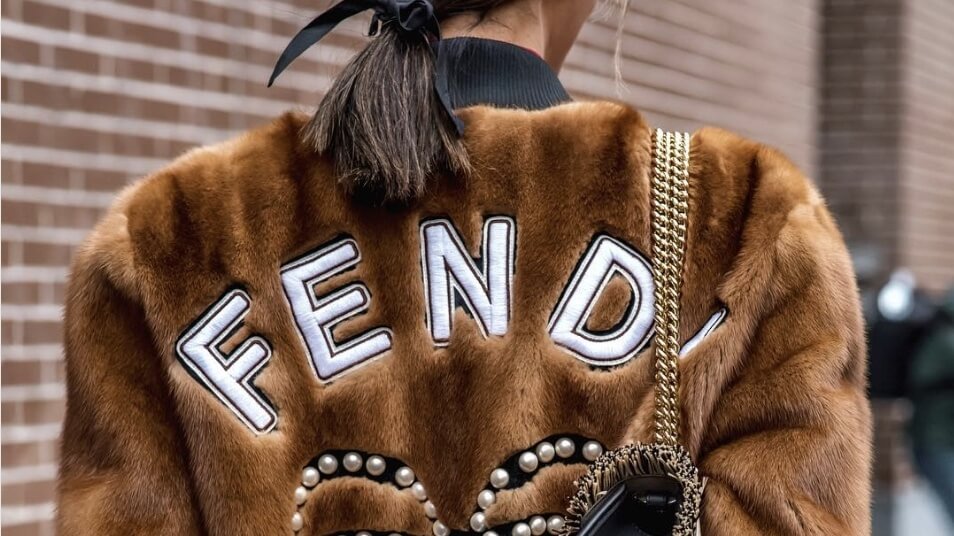
At his introduction to the brand in 1967, Karl Lagerfeld was an unknown emerging designer. He became a member of the House’s creative team and began a series of studies on particular leather processing techniques. His creative input would transform the label, from embracing fur as a modern creative textile to the introduction of the iconic double F logo, infamously used in suitcase linings. Eventually Lagerfeld was instilled as Fendi Creative Director, and launched the first women’s ready-to-wear collection in 1977, propelling the accessories label into the world of mainstream fashion.
Karl Lagerfeld revolutionised the way fur was worn, integrating accents and elements of mole, rabbit, and squirrel pelts into ready-to-wear garments and leather goods in a detailed and unusual way. The resulting popularity of the brand’s accessories and clothes was explosive. Over the decades Fendi’s fur atelier produced many works of art, intricate, cutting edge, with an incredible level of detail.
However, the process also sparked worldwide controversy as ethical concerns grew from both animal rights parties and within the fashion industry. Most notable is PETA’s provocative “I’d rather Go Naked” anti-fur Campaign, a 30-year effort that featured famous supermodels and celebrities such as Christie Turlington, Pamela Anderson, Eva Mendes, Pink, Dennis Rodman and Gillian Anderson baring all in a bid to boycott fur.
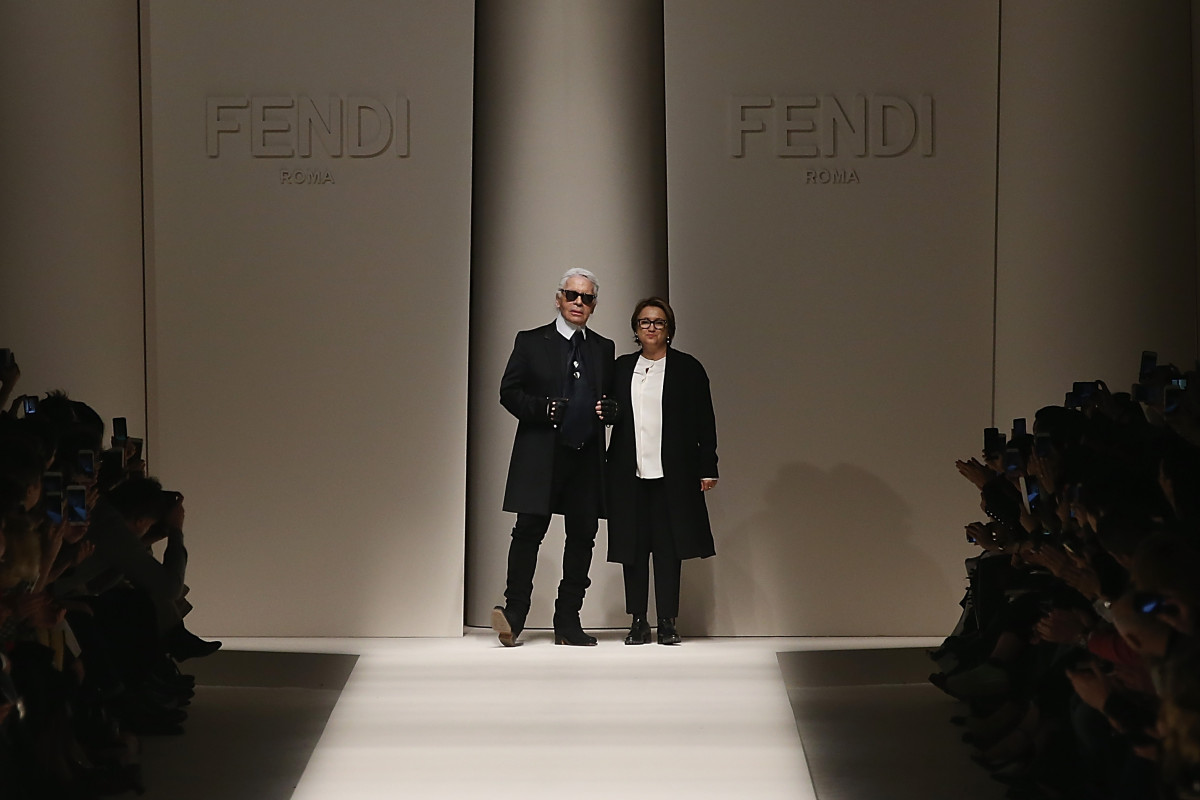
Despite the heat, Lagerfeld’s 50th anniversary collection of Fendi in 2015 still featured “haute fourrure” as its main element. Lagerfeld’s reply to criticism was unfazed.
“For me, as long as people eat meat and wear leather, I don’t get the message.”
Nonetheless fur has taken a back seat in Fendi’s output of recent years, and Lagerfeld continued to steer the label’s output, as he collaborated with the current generation of Fendis and particularly the granddaughter of Edoardo and Adele Fendi, Silvia Venturini Fendi. Silvia joined the dynasty in 1994 and remains creative director for accessories and men’s lines to this day. Under her direction Fendi’s business grew substantially, with a focus on material quality, finishing and leather. By 1999, 40% of business revenue came from accessories, 32% from furs and clothing and 28% from licenses and other activities.
Solidity and Innovation
Silvia was also behind some of the brand’s most iconic bag designs, which remain a cornerstone of the Fendi collection, most notably the award-winning Fendi Baguette bag. A slim handbag which is worn under the arm like a French baguette, the “It” bag she devised now comes in over 600 different models and is so popular it has an entire book devoted to it. Silvia’s other notable design additions include the classic Peekaboo- or anti-baguette- bag, the dotcom bag, Bag Bugs and Fendi Selleria. With each new design innovation Fendi’s clever marketing strategy has incorporated celebrity alignment, cementing each new piece into the zeitgeist, and Fendi stores into major capitals internationally.
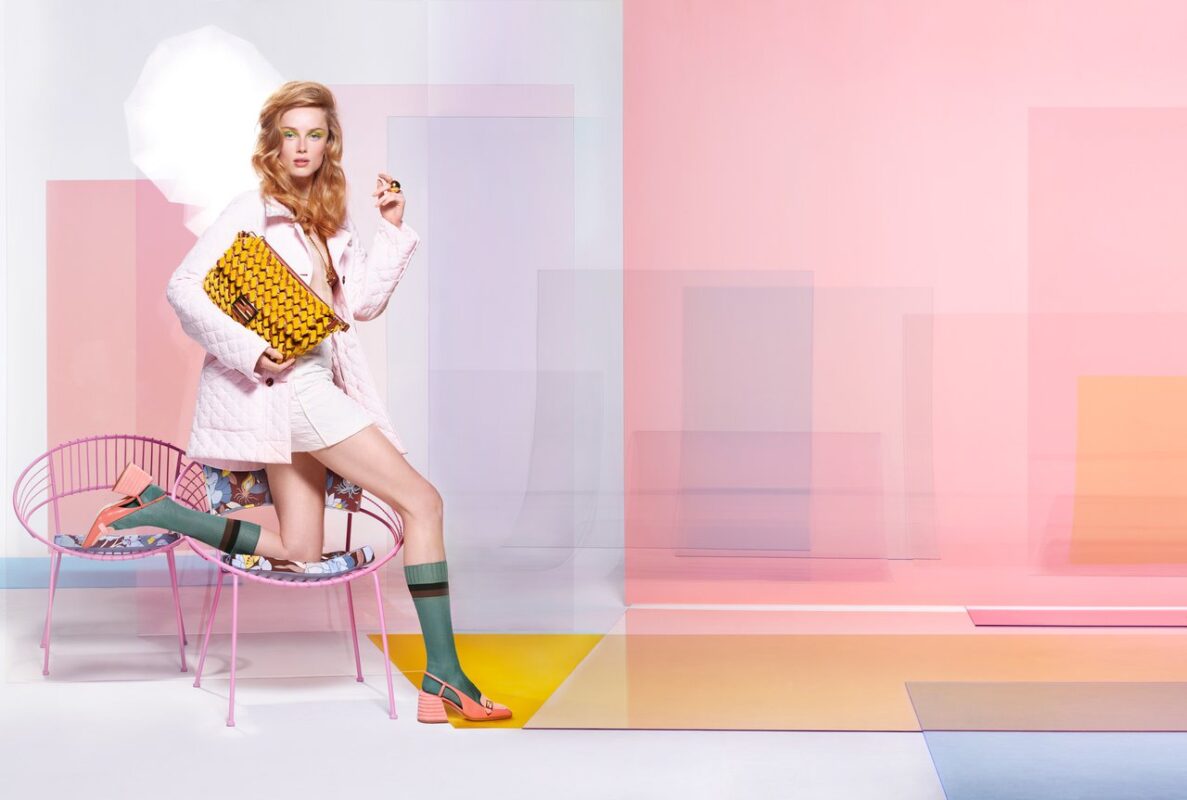
With the opening of their New York Madison Avenue boutique, Fendi featured Rihanna, Sarah Jessica Parker, Jourdan Dunn, Rachel Feinstein and Leandra Medine personalising their own 3Baguette bag. For Fendi’s Bond Street London store launch, ten iconic woman including Adele and Gwyneth Paltrow customised a version of the Peekaboo.
In recent years, Fendi has seen a shift in approach. With the advent of e-commerce and a need for brands to stay relevant and true to their story, Fendi has embarked on new digital strategies and store concepts, including a customised shop through e-commerce platform Farfetch for made-to-order handbag designs. It has also invested in corporate social responsibility initiatives and historical restoration projects.
Staying true to their roots, Fendi aligned with Roman architecture and monuments, restoring the Trevi Fountain and working with young talent in the field of antique restoration and cultural heritage throughout Italy.
In 2015 Fendi’s Headquarters became a testament to their ethos. After a careful and expensive restoration project, Fendi moved into the Palazzo Della Civilta Italiana in Rome. Commissioned by Mussolini during World War Two as an exhibition space, the six-floor structure nicknamed ‘The Square Colosseum’ is a masterpiece of modernist architecture, and reportedly costs an annual fee of $2.8 million euros to occupy the space. It conveys solidity, innovation and classic Roman principles, much like the brand itself.
A Century of Fendi
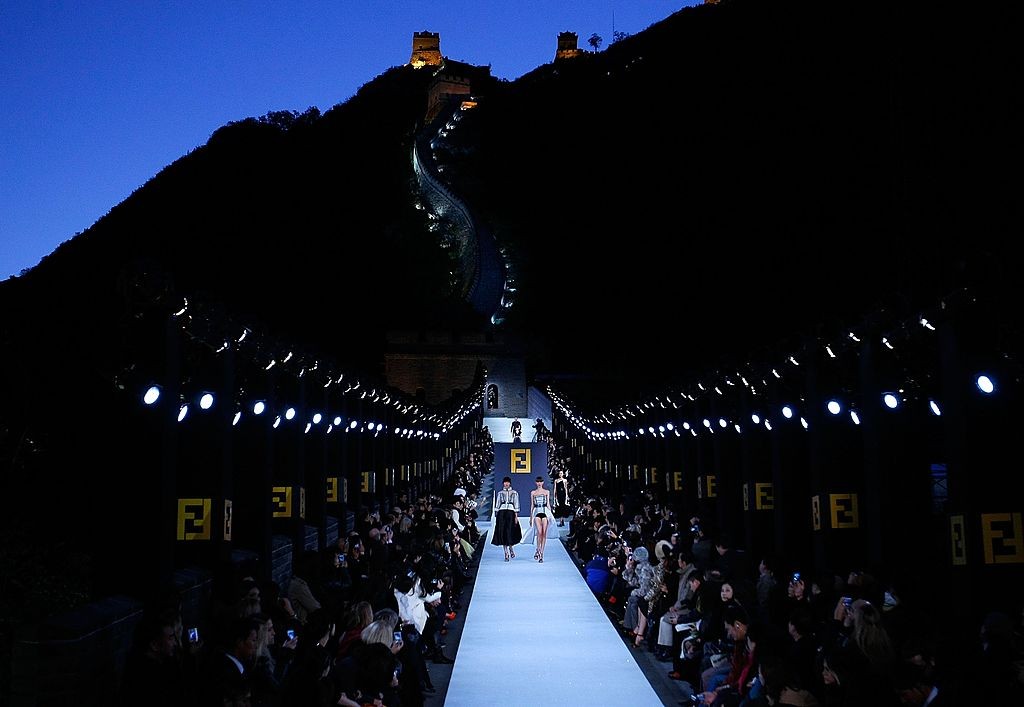
Fendi is almost at the 100-year mark since the iconic brand’s establishment, but is yet to show its age and refuses to back down from major creative challenges. In 2007, Fendi saw months of meticulous planning that accumulated in 89 models walking down a runway visible from the moon on the Great Wall of China. Fendi’s Spring/Summer 2008 campaign was a significant and highly acclaimed campaign. Outside the collection itself, the exceptional spectacle is remembered as the largest runway show in history.
French luxury goods group LVMH bought over Fendi in 2001 and in September 2020, English designer Kim Jones took over the role of Artistic Director of Fendi’s women’s collection, formerly occupied by Lagerfeld. Despite this, the brand remains solid and family run. Today Fendi is known as the mark of ultimate luxury, with collections that have expanded to include Menswear, iconic accessories, exquisite ready-to-wear and Haute Couture collections with over 1 billion euro (1.2 billion US Dollars) in annual sales. Yet at its core, Fendi remains wedded to the values which have navigated the brand through fashion’s eras for almost a century – tradition, unparalleled handmade craftsmanship, and innovation. It’s what keeps them current and sets them apart, ensuring Fendi will remain in the fashion lexicon for another hundred years.
Subscribe to FIB’s Weekly Alchemy Report for your weekly dose of music, fashion and pop culture news!






